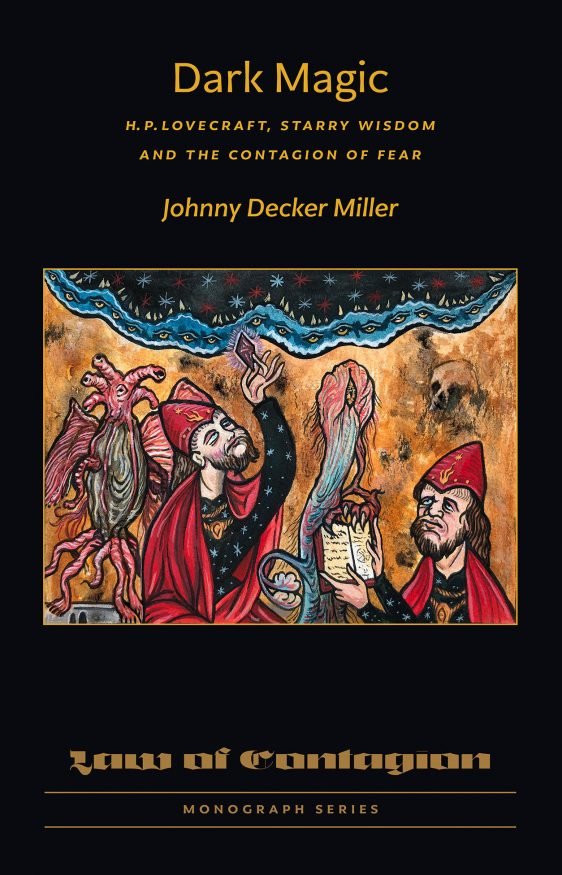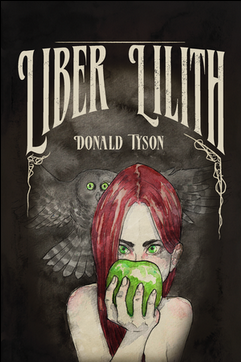Occult Fiction
Alongside Morris's two innovative fantasy novels is a third, stranger work: The Folk of the Mountain Door, an unfinished book he worked on until his death in 1896.
Although today largely unknown in the English-speaking world, few authors in history can match the potent and uncanny darkness conjured by the early German romanticist Johann Ludwig Tieck
One of the most influential novels ever written but today quite obscure and rarely in print, English polymath William Morris’s The Roots of the Mountains may well be the first true modern fantasy fiction novel.
Somnium ("The Dream") by Johannes Kepler is a captivating blend of science fiction, astronomy, and mythology, written in 1608 and published posthumously in 1634. This groundbreaking work explores the possibility of traveling to the Moon, offering a unique perspective on celestial phenomena through the lens of a dreamlike narrative.
Magical duels are depicted in film and other popular fiction as flashy affairs full of supernatural fireworks, and they’re often given as proof of a person’s ability to use “real magic” for self-defense and to influence the world around them.
Our second collection of prose and verse, with an introduction by series editor Susan Redington Bobby and a foreword from Clint Marsh. Published in December 2023 by Fiddler’s Green. Tales from Fiddler’s Green 2 features red foil titling, illustrations throughout by Niall Grant, and 80 pages of short fiction and poetry.
Our first collection of prose and verse, with an introduction by series editor Susan Redington Bobby and a foreword from Clint Marsh. Published in spring 2021 by Fiddler’s Green. Tales from Fiddler’s Green 1 features red foil titling, illustrations throughout by Open Sea Design Co., and 72 pages of short fiction and poetry
The Vampyre is the first Vampire story published in English, a novella written by John Polidori, physician to Lord Byron. The Vampyre appeared in England’s New Monthly Magazine in April 1819.
Written while Irving was living in Birmingham, England, and then published in 1819. Along with Irving’s companion piece Rip Van Winkle
Dark Romanticism loved the irrational, the scary spooky and the demonic Grosteske. The fallen writers explored the worlds of nightmares, psychic disturbances, fears and dark sides of the human, as far as possible. They did not want to show the boundaries between nightmare and reality, but rather to blurr those limit in their works.
Matthew Gregory Lewis was in his late teens when he composed and published The Monk. Like Shelley, the Gothic had set his imagination alight, but while with Shelley this flowed into a Neo-Platonic Anarchism, Lewis detonated into a tendrilled three-volumes of sex, satan and unease.
The Golem (original German title: Der Golem) is a novel written by Gustav Meyrink between 1907 and 1914. The novel centers on the life of Athanasius Pernath, a jeweler and art restorer who lives in the ghetto of Prague.
"The Castle of Otranto," written by Horace Walpole in 1764, is often regarded as the first Gothic novel. Its initial edition claimed to be a translation of a 1529 Naples manuscript found in the library of an ancient Catholic family in northern England.
Those who dwell unseen within the hedge, the grotesques emergent in the weave of tangled roots, the writhing form amid the shadows of the Willow boughs—all are keepers of a rustic and terrible wisdom predating the emergence of mankind. Lurching between disembodiment and wholly manifest flesh, the baleful forces of wasteland and rural barren have long been etched upon the human soul.
A novel of Witchcraft in 17th century England telling the tale of the the Nokes family who are genuine witches and their attempts to outwit Matthew Hopkins, the Witchfinder General, and avoid the gallows. The author is one of the world's leading figures in contemporary Witchcraft, a true elder of the Craft, who brings frightening authenticity and genuine traditional insight to this thrilling story.
It has long been rumoured that on the eve of August 1940, a coven of witches gathered in the New Forest to create an immense surge of magical forces to aid Britain's fight in WWII.
Far away from everything familiar, Katy Hunter dreads the thought of spending six months in the sleepy countryside with relatives she barely knows.
Shalat is the unholy offspring of Mörk Borg, Knightfall, Tales from a Thousand and One Nights, and the Ars Goetia. A pitch-black epic medieval occult fantasy; a genre-defying descent into blood, war and magick.
Kenneth Grant began writing the novel in the mid 1980s. He developed it in order to explore, in a fictional setting, many of the themes of 'The Book of the Spider'.
This is the second volume in the series of novellas by Kenneth Grant. This volume consists of two stories, both of them concerning the voodoo Bultu, or Cult of the Spectral Hyanae.
The first, Gamaliel: The Diary of a Vampire, presents the history of a woman, Vilma, who attempts to invoke unseen Intelligences but takes a wrong turn. She loses her way in the Gamaliel, the Qliphoth of Yesod, and eventually succumbs to vampiric possession. The story unfolds as extracts from her Magical Diary, the editor of which makes a horrifying discovery as the Diary closes.
The first novella, The Other Child, is a tale of two brothers, one a Child of Light, the other of Darkness, and the struggle for a cataclysmic magical power which they each partially embody. A scholar of Ancient Egyptian studies is unwittingly drawn into the struggle, eventually assuming a priestly destiny as events unfold.
This is the rich and gripping first novel by Kenneth Grant. Written in late 1952 and early 1953, the typescript was thought lost for many years.
The writings of the celebrated American author of weird fiction H. P. Lovecraft are known for their groundbreaking innovation, particularly their treatment of ‘the other’ or otherness, incepting a palpable state of alienation in the reader.
Liber Lilith is a powerful and disturbing novel which tells the story of an unfortunate German occultist, Karl Steiger.

























